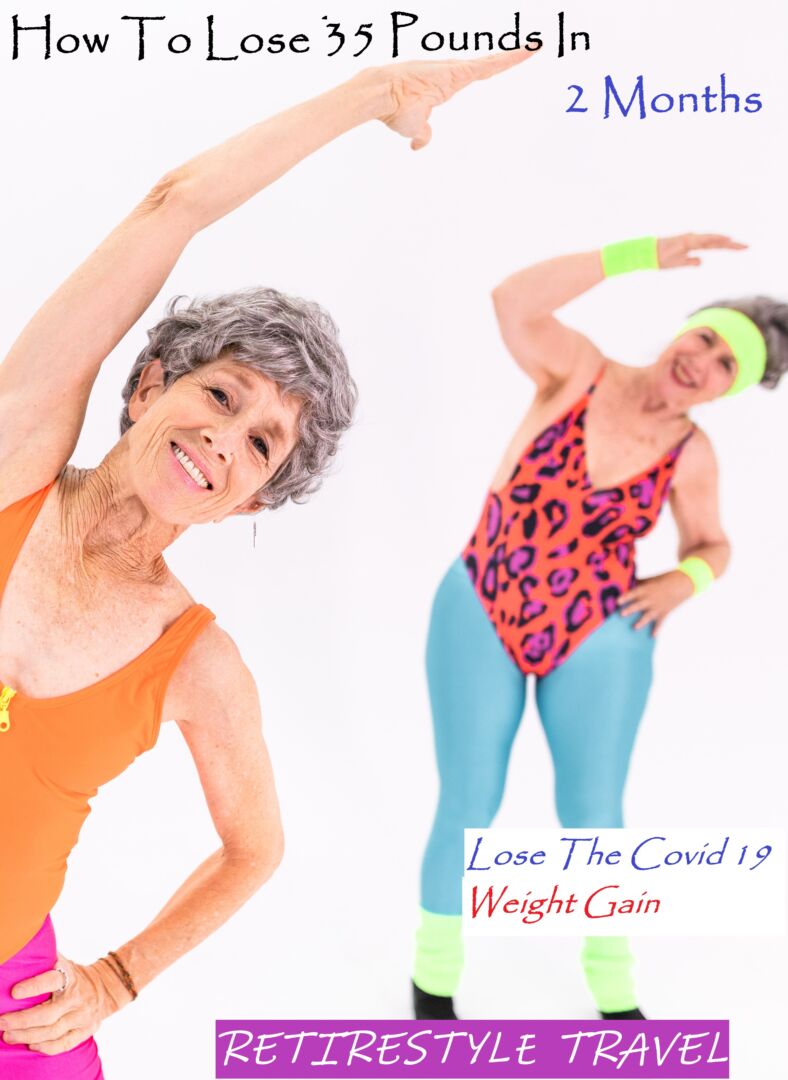
How To Lose Weight During The COVID-19 Pandemic In 3 Simple Steps
3 simple steps to lose weight during the COVID-19 pandemic –
How I lost 35 pounds in 2 months
Why people gained weight recently
During the COVID-19 Pandemic and related shutdown, many people gained weight.
Online, people jokingly call it the Quarantine-15 (because they gained 15 pounds during the quarantine) and more recently call it the Covid 19 (meaning they gained 19 pounds since the pandemic started).
As a personal example, Kevin gained around 30 pounds during 2020.
Here are some of the reasons why it was easy to gain weight during the pandemic and related lockdowns.
Lack Of Physical Activity
We believe a big reason why people gained wait during the pandemic was because their local fitness centre was forced to close or their physical activities were cancelled.
For many people, their workout buddy or fitness trainer at the local gym keep them motivated and accountable.
Group fitness classes provide a sense of community and support and guide the exercises so the participants don’t have to plan or think about it.
Organized team sports are a good way to stay active while not really feeling bored like when you are doing repetitious exercises. Players also have fun with their teammates and get the thrill of competition – the thrill of victory or the agony of defeat.
Kevin’s main source of exercise for the past 5 years has been touch football, which can be played outdoors in the Summer and indoors during the Winter. When the touch football seasons were cancelled, Kevin didn’t immediately find a new way to get exercise and, as many of you know, inertia is hard to overcome. A body at rest tends to stay at rest.
For many months at a time in the dead of Winter, people couldn’t even go to a mall for a walk to stretch their legs.
For this reason, some individual outdoor fitness activities such as cycling, skating, and cross-country skiing gained tremendous popularity. However, the people who took such initiative were in the minority.
Emotional State
Another reason that people gained weight is their emotional state. We see this as a triple-whammy of boredom, stress, and depression.
If people were lucky, they were concerned about their jobs, being forced to adapt to new ways of communicating and doing business at work, new public health guidelines and restrictions, working from home, video conferencing.
If they were not lucky, they had to deal with losing their jobs or closing their business and the associated uncertain financial outlook. Some people also had to home school their kids, care for family members in quarantine, and care for aging parents.
The stress came from many sources.
We not only had to worry about our own health and possible exposure to the virus, but we also worried about our children, parents, and other immediate family.
Many single people felt tremendous loneliness as they could not visit with friends or go on dates with their significant other.
More stress came from the shortages of personal protective equipment and hand sanitizer as well as certain foods and household items (like toilet paper).
The high spikes of case numbers during each phase of the pandemic and slow roll-out of vaccine programs caused a sense of hopelessness for many people.
The worst stress of all was experienced by those who lost a loved-one due to our during the pandemic. We were very fortunate and blessed that we did not experience a loss such as that.
We personally felt great disappointment because we had to cancel two trips that we had really been excitedly anticipating. We were looking forward to frolicking on a beach and taking many long walks during a two-week long trip to Puerto Vallarta, Mexico in April 2020. We also had planned and booked a one-week long trip to Las Vegas, Nevada in July to celebrate our 25th wedding anniversary and Kevin’s 50th birthday.
Many people deal with stress and depression by eating unhealthy, comfort foods. Ordering dinner from a food delivery service became frequent and routine. Snack foods in the pantry are way to convenient when you are sitting around the house bored instead of out at work or school. Kevin definitely falls into this trap sometimes.
Some people also gained weight due to the urge for cocooning.
Since they were trapped at home, they equipped it with many of the comfort activities they always wanted (sometimes funding their purchases with the money they saved on entertainment). This meant new home theatres with comfy chairs, big screen TVs with surround sound, new Blue Ray players, new gaming consoles and video games, and subscriptions to every streaming service around such as Netflix, Amazon Prime and Disney Plus. It also led to new indoor hobbies to pass the time like colouring and knitting. More inactivity and sitting around the house certainly led to some weight gain.
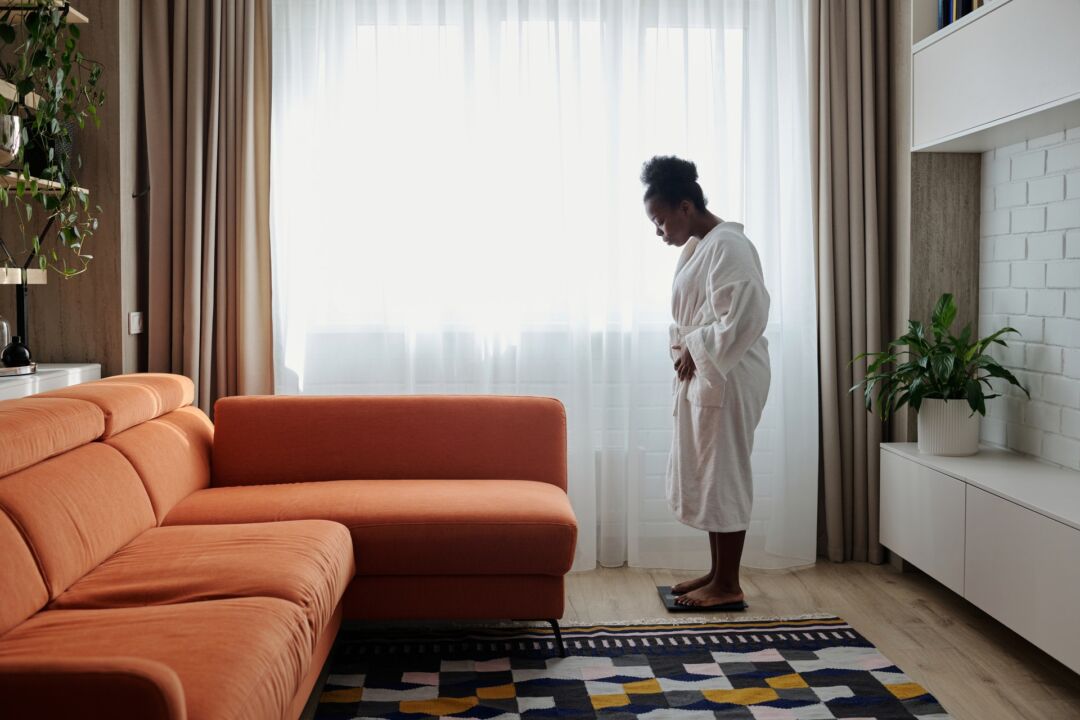
How Kevin got in this predicament
Kevin’s weight is like a yo-yo; going up and down by 50 pounds every few years, but tending towards being 50 pounds overweight more often than not. Kevin has tried many diet and exercise programs over the years, but none have stuck long-term. Often, a minor injury will occur and, after time to heal, inertia kicks in again.
Tina is a great cook, which is like a double edged sword. This is because Tina provides healthy, home-cooked meals every day with lots of fruits and vegetables, but also because the meals are so delicious that Kevin wants to eat huge portions. Italians like to start with a pasta or soup for the first dish, followed by a main dish of meat or fish with vegetables or a salad and a starchy side dish.
Kevin has experienced health consequences such as sore joints and a recent diagnosis of high blood pressure.
How Kevin lost weight in 2021
Starting on January 1, 2021, Kevin decided to try to lose weight.
It was partly due to a New Year’s Eve resolution, partly due to encouragement and inspiration from Tina, and partly due to self-realization that he was once again near his all-time maximum weight.
In the 10 short weeks since then, Kevin has lost a whopping 40 pounds. He has lost all of the weight he gained in 2020 and then some, achieving a weight he hasn’t seen since the summer of 2019.
Once Kevin loses another 10 to 15 pounds, then he can go into weight maintenance mode which should be easier to manage. In maintenance mode, you can consume more calories or exercise less or some combination of the two in a way so that you aren’t losing or gaining weight.
Here is how Kevin lost the Quarantine-15 weight in 3 simple steps. We’ll call it the Retirestyle Weight-loss Program for future reference.
If Kevin can do it, you can do it.
You are probably dying to know the 3 steps because it can’t be that easy. No one is saying it will be easy, but if you follow these 3 simple steps, you will see results without doing a lot of planning or research and without needing a Peloton, weight-loss coach or personal trainer. Individual results will vary.
The 3 steps are exercise, diet, and intermediate fasting.
The key is to have a calorie deficit, which means you burn more calories than you consume each day.
The problem is that most people hate to count their calories and avoid exercise.
You can lose weight with the Retirestyle Weight-loss Program regardless of your age or how overweight you are. That being said, to avoid having a heart attack, passing out from low blood pressure, or having some other medical issue, please consult your doctor before starting any exercise program.
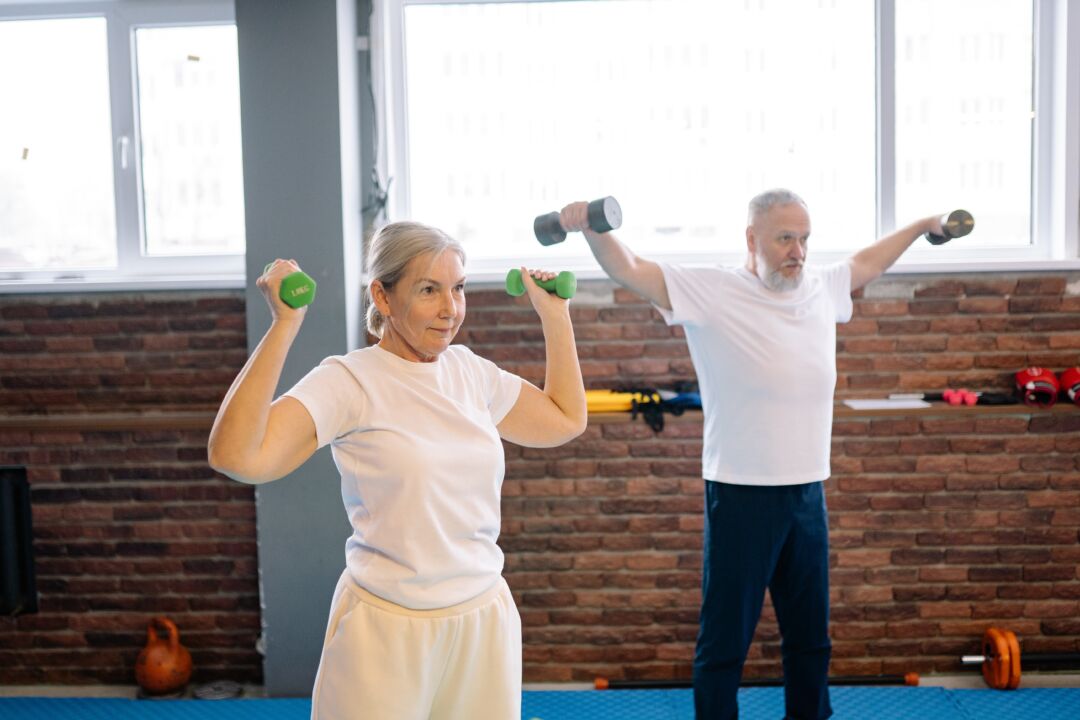
What is the Retirestyle Weight-loss Program?
In brief, the Retirestyle Weight-loss Program looks like this:
Monday to Thursday – Diet and exercise.
Friday – Treat night. Diet and exercise, but no diet for dinner only.
Saturday – Diet, but no exercise.
Sunday – Cheat day. No diet or exercise.
Consistency of diet and exercise is important, but the treat night and cheat day are also important ways to reward yourself, enjoy life, and recover both physically and mentally.
Intermittent Fasting is done every day.
When you do something consistently for a significant period of time, it becomes a habit and becomes less of a chore. Thus, besides the weekly cycle, we suggest committing to this program for 10 straight weeks. You will see that 10-week goal getting closer and closer as you see progress over that time period. After 10 weeks, reward yourself with a week “off” – perhaps with a less strenuous or shorter exercise routine and a few extra cheat days. Then, you will feel rejuvenated for the next 10 week cycle.
Please continue reading for more details about the Retirestyle Weight-loss Program.
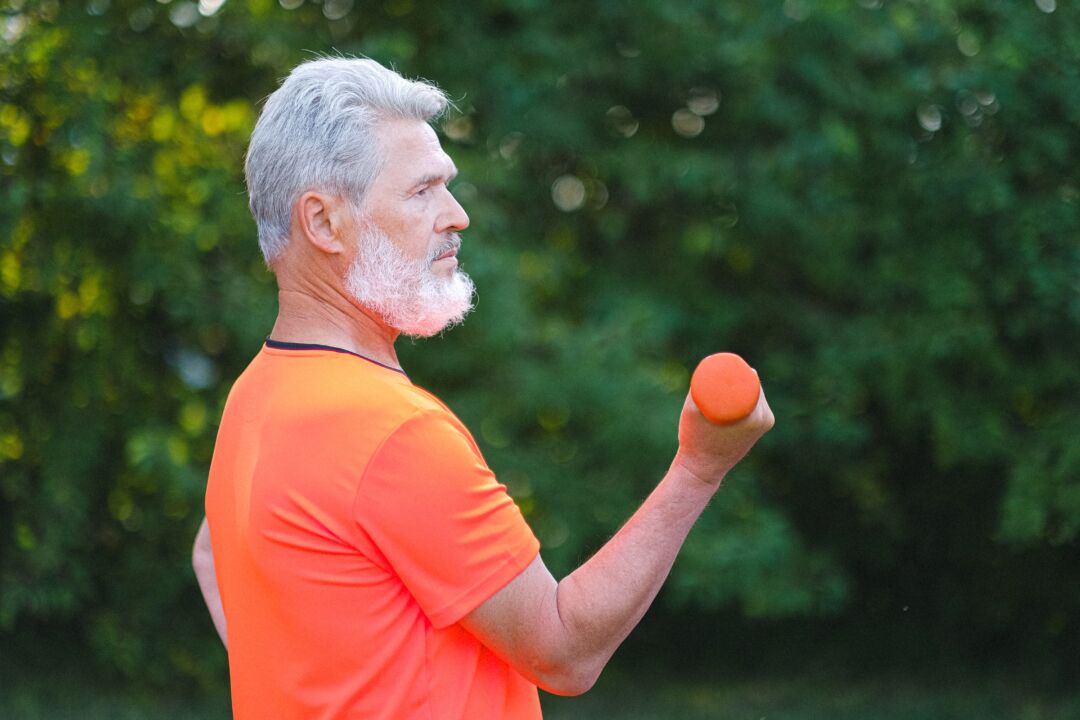
Exercise
We feel that exercise is the most important part of losing weight and maintaining a healthy lifestyle.
Unfortunately, this is also the hardest part.
Most exercise is not fun, possibly excluding competitive sports.
You sometimes feel pain while you exercise and then ache after you are done.
If you are really pushing yourself, you feel exhausted to the point of wanting to give up and feeling like a dirty, sweaty pig.
Kevin found a routine that has led to great results so far without having to go overboard with exercise.
What makes this program bearable for him is the variety of physical activity and the fact that he listens to his favourite soundtrack on Apple Music while he exercises. The songs energize and motivate him and make the time pass quickly while exercising. The variety is a bit like cross-training or circuit-training. While one muscle group is recovering, you work a different one.
It helps to have someone else in your household who is also regularly exercising because it will be motivational to see their gains and dedication. You can also support & encourage each other while holding each other accountable.
We suggest you try some variation of this exercise routine in the order below, which takes less than 1 hour.
A. 10-minutes of stretching
Do approximately 6 to 12 of each holding for 2 to 6 seconds.
- Arms (arm circles, arm thrusts, triceps stretch)
- Neck (front, back, sideways tilt, and head twist)
- Back (twists, side stretch, piriformis stretch)
- Legs and groin (standing knee to chest, standing quad stretch, toe touches, side lunges, front lunges, butterfly stretch, frog stretch)
The reason we stretch is to warm up and get the blood flowing, to make the muscles longer and leaner, and to help avoid injuries, cramps, and pulled muscles.
You can find drawings and descriptions of these stretches by searching on Google.
B. 15-minutes of weight training
All you need is 2 dumbbells (2 to 5 pounds each) to start and increase the weight as you get stronger
To tone muscle rather than build muscle, you want to do more repetitions at a lower weight.
Kevin has been doing 1 set of each with 30 to 50 repetitions.
- Push-ups or bench press (if you do push-ups, you should do them from your knees until you get stronger)
- Sit-ups or crunches (this one is a bit strenuous, so its optional)
- Leg lifts (1 at a time and then both at the same time)
- Seated concentration bicep curls (1 arm at a time)
- Seated overhead shoulder press (1 arm at a time)
- Seated triceps extension/press
- Standing side raise (lateral raise)
- Standing bicep curls (both arms at the same time) – Kevin does this final set of curls after the exercise bike so that his arms are no longer tired.
Two months ago, Kevin could barely do 10 push-ups. Now, he does over 40 push-ups every day. Your body is a machine and it is programmed to adapt to give you what you need from it.
You can find drawings and descriptions of the exercises listed above by searching on Google.
Muscle weighs more than fat, so the muscle gains will offset some of the fat you lose when you step on a scale. Don’t get discouraged.
Keep in mind that muscle burns calories even when you are sitting around doing nothing, so the muscle has long term benefits to your weight-loss journey. According to our Google searches, every pound of muscle you have will burn 6 calories per day compared to 2 calories per day for a pound of fat.
C. 30 minutes of aerobic exercise on an exercise bike, elliptical, or treadmill
Kevin loves the exercise bike because it does not put any weight or pressure on his knees, which were damaged a bit playing football for many years.
We think it really makes a difference if you do a workout with a stepping up of intensity leading to 100% exertion and repeating that process several times.
You should start and end your cardio workout with 1 minute of low intensity to warm up and cool down at around 40% of your maximum intensity.
For simplicity, Kevin’s 4-minute intensity step-up “cycle” looks something like this:
- 1 minute – 50% to 60% intensity (depending how tired you feel)
- 1 minute – 70% intensity
- 1 minute – 80% intensity
- 30 seconds – 90% intensity
- 30 seconds – 95% to 100% intensity (really push yourself!)
Remember that “intensity” is subjective. It will be different for everyone. When we say 100% intensity, it means push yourself just a little harder and a little longer than what is comfortable or what you thought you could do.
If you are just starting a fitness program or have health conditions, don’t over-do it, especially at first. Any exercise, even low-intensity exercise, that is sustained for over 15 minutes has good cardiovascular health benefits.
You can change your intensity in 3 ways. You can adjust the tension on your exercise bike, change the incline on a treadmill, or just change your speed.
Kevin used to work with an 80 year old man who still ran half-marathons. He would run for a few minutes and then walk for a minute and repeat that for 10 kilometers. If he can do it, so can we.
After hitting 90% or 100% intensity, when you drop down to 60% intensity, it feels almost like a rest and you can catch your breath.
Kevin also feels that the change of intensity/speed helps break the monotony and makes the time pass more quickly.
Kevin repeats this 4-minute intensity step-up cycle 7 times, which takes 28 minutes and a total of 30 minutes with a 1 minute warm-up and cool-down.
The aerobic portion of Kevin’s workout alone burns 450 calories. Additional calories are burned through the stretching and weight training.
Some diets that Kevin has used in the past indicated that it is best to exercise first thing in the morning and then wait a few hours before eating breakfast because it burns more fat. Timing of the exercise can make a small difference, but the fact that you are exercising at all makes all the difference in the world.
You will find that you have more energy later in the day after you have worked out.
You might even want to go for nice walk at a park or mall, like Kevin and Tina have been doing often in 2021. Many people feel safer in outdoor public spaces and masks are not even mandatory when you are walking in the park. We went for more walks in the park in 2 months than we did in most full years. We really enjoyed exploring Assiniboine Park, St. Vital Park, Kildonan Park, and Assiniboine Forest.
These walks don’t even feel like exercise because they break the monotony of the day and get you some fresh air. However, they still burn additional calories. Just try not to spend too much money shopping at the mall.
Instead of stretching and weight training, Tina does low-impact Yoga, Pilates, Zumba using exercise videos from YouTube or a fitness site or app. Some of these videos suggest using very light dumbbells or even just holding a full bottle of water in each hand. These exercise videos often combine stretching, light weight training, and aerobic exercise in one short 5 or 10 minute workout. Thus, you can do several of these videos in a row to get different types of exercise or work on different parts of your body.
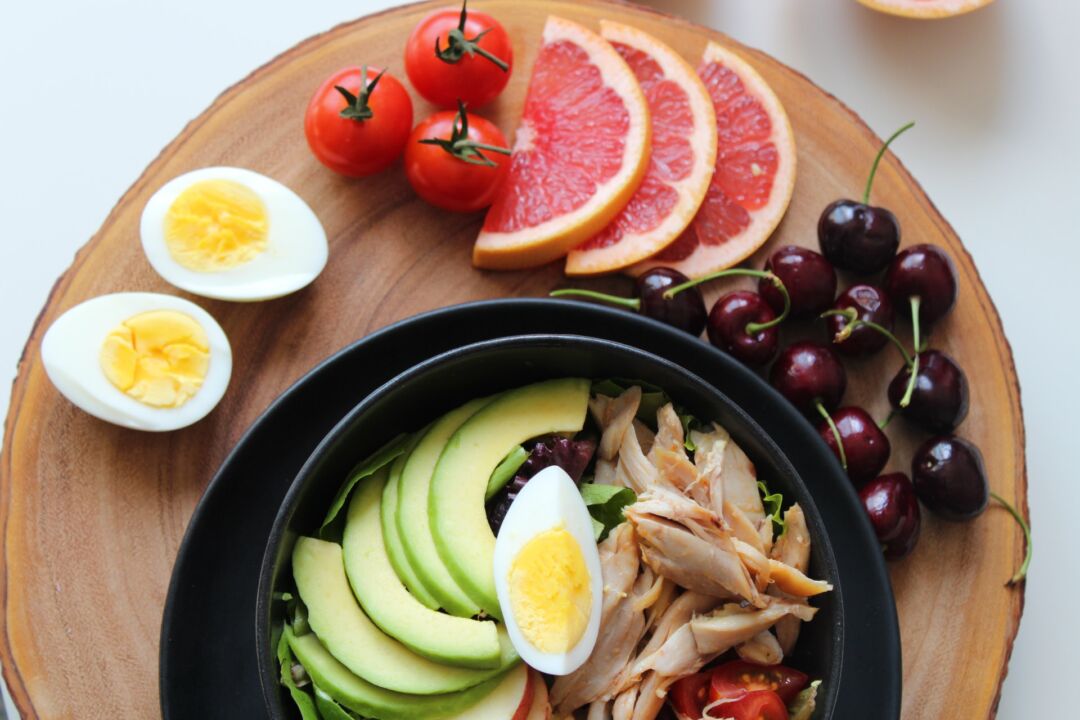
Diet
We don’t think there is a need to weigh your food or count calories. We don’t think you have to drastically change what you normally eat. You mainly need to eat smaller portions. We try to limit a meal to one fist-sized portion of protein and one fist-sized portion of veggies or carbohydrates or some combination of veggies and carbohydrates.
Smaller plates help because they make you feel like the portions are bigger. It’s almost an optical illusion, but we find it works.
Change What You Eat
To speed up your weight-loss, cut back on carbohydrates, fat and sugar as much as possible. The changes do not have to be drastic at first, but you’ll be encouraged to make more changes as you see results.
Another easy way to reduce your sugar and unnecessary calories is to avoid drinking juice or soda pop. Kevin has no more than one glass of juice with a meal and then drinks water.
Try not to snack. Most inexpensive and satisfying snack foods are full of calories and are often full of salt or sugar. If you get hungry between meals and a glass of water doesn’t do the trick, then eat 2 or 3 nuts (cashews or almonds) or a bite or two of chicken or tuna. It helps to have these snacks prepared and easy to find so you don’t resort to junk food.
Too keep up with healthy nutrition necessary for muscle recovery and energy, you might want to start taking multivitamins in the morning.
To lose weight faster, drink a meal replacement shake or protein shake for breakfast sometimes.
Cheat Day
On a cheat day (Sunday), feel free to eat whatever you want and as much as you want. You will find that as time goes on, your stomach shrinks and your appetite decreases. When you eat what used to be a normal-sized meal, you will feel very full.
Do not eat desserts or junk food except on cheat day.
You might also think twice about eating candy or chocolate on a cheat day once you realize how long you have to exercise to burn off those extra calories.
Treat Night
Treat nights are a way of both rewarding yourself for completing a week of the Retirestyle Weight-loss Program and a way to enjoy life a bit. All work and no play makes Jack a dull boy. As an added bonus, you can support local restaurants by ordering takeout even when their dining rooms are closed due to a pandemic shut-down.
We love good food and enjoy eating restaurant food once a week, so the treat night allows us to indulge and keep a part of our old routine that we love. We even enjoy having conversations during the week to try to decide what kind of food we will order and from where. There is a sense of anticipation and something to look forward to.
Drink Lots Of Water
Drinking lots of water throughout the day is also a great way to feel full. We recall reading somewhere that most people mistake thirst for hunger and eat a snack when all their body really wanted was some water.
Water also helps to digest your food and flushes toxins out of your system.
You’ll also need to drink more water to keep from becoming dehydrated after your new exercise routine.
Reduce Alcohol Consumption
You have probably heard news stories about skyrocketing sales of alcohol during the pandemic. Some people use it as a coping mechanism and can drink a bit too much. If you enjoy a few drinks everyday (perhaps one with dinner and one while you watch TV or play video games), reducing your alcohol consumption can still have health benefits. Alcohol itself is loaded with carbs and sugar, which means more calories for your body to burn or store as fat.
However, its the things that accompany alcohol that are even worse. You are probably mixing your spirits with soda pop and munching salty or sweet snack food while you drink. Once you have more than a few drinks, all bets are off and your diet will probably go out the window and you’ll be ordering from a food delivery service. By reducing the alcohol, you will also reduce your consumption of pop and junk food.
Eat Less Meat
The last dietary change is optional for you, but we are trying to eat less red meat. We have seen documentaries, news programs, and read articles and news releases about the health benefits of eating more vegetables and less meat. Health Canada even issued a new food guide in 2019 in which they recommended eating more plant-based foods (fruits and vegetables) and less meat and dairy.
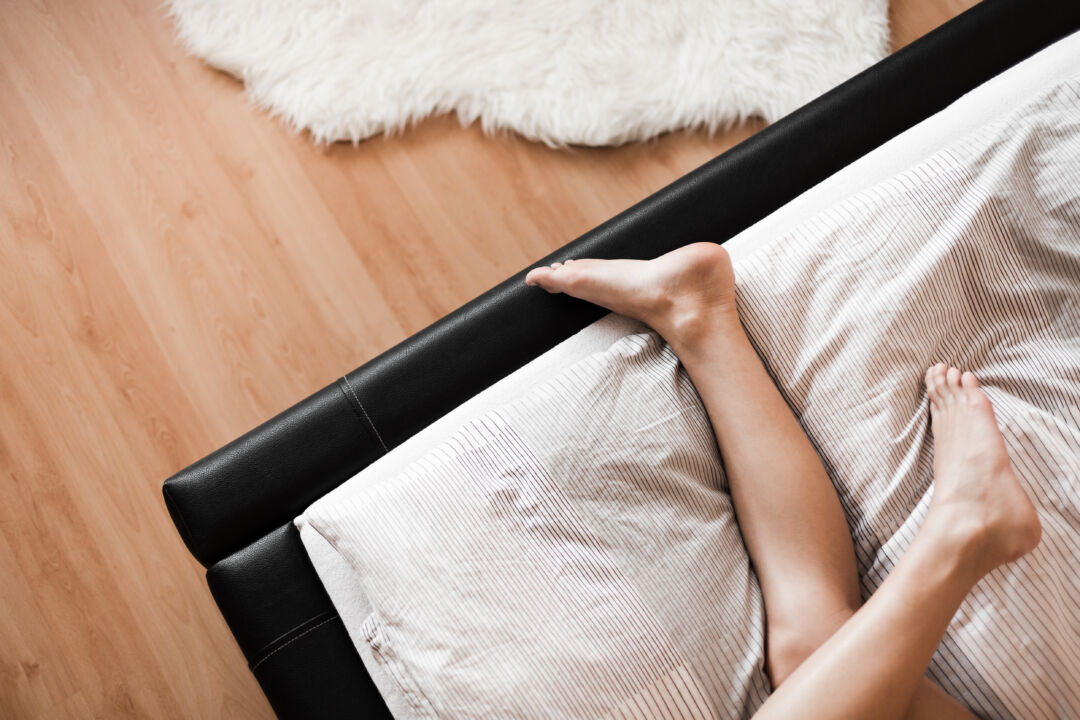
Intermittent Fasting
You might not call this fasting, but it really helps your body if you don’t eat after dinner. Fasting just means not eating for certain periods of time.
If you try to finish dinner by 6 PM and you don’t eat breakfast until 8 AM, then you are effectively fasting for 14 hours each day.
To make intermittent fasting more successful, you should try to go to bed at a reasonable time every weeknight. We go to bed by 11 PM. If you are asleep, you are not going to be snacking while you browse social media or watch TV.
We are not dietitians or scientists, but this strategy has been part of some of Kevin’s prior diet programs like “Body for Life”.
It has something to do with the body converting extra calories (including anything you eat shortly before bed) to fat while you sleep. If you don’t eat for a longer period of time, your body burns calories that have been stored as fat.
Get More Sleep
Various government agencies and research institutes recommend at least 8 hours of sleep per night for adults.
Getting more sleep has many benefits. Your muscles will have more time to heal. You will have more energy during the day. Your mind will be more refreshed and your stress-level will decrease.
Importantly, if you go to bed earlier, you will be able to wake up earlier to do your exercises before the day starts.
We find if you leave exercise until the end of the day, we have less energy and have more distractions, so we are more likely to skip a workout.
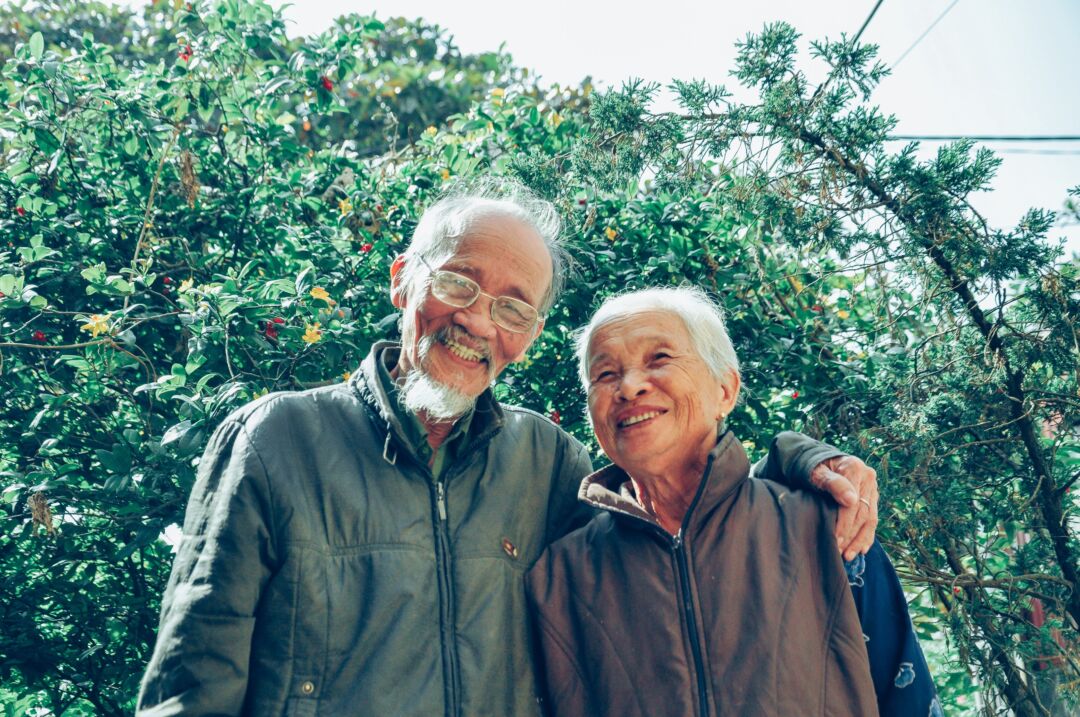
It’s Your Time To Shine
There it is.
Make small, simple changes to your life and you will see results.
Imagine how much better your future trips will be when most of the world has herd immunity and it is safe to travel again. You can feel comfortable and attractive in those clothes that used to fit. You can explore so much more when you have more energy and less weight to lug around. You can do more vigorous and strenuous activities such as hiking up a scenic hill.
Even if you don’t follow the program completely and instead just add some exercise, change your diet, or stop snacking at night (intermittent fasting), you will still see results. Combining all three just multiplies the health benefits and weight-loss.
It is not rocket science.
You can do it!
If you try our Retirestyle Weight-loss Program, please comment below to let us know how it works for you.
Happy Travels & Good Health,
Kevin & Tina
Please subscribe to our newsletter to receive notifications for new posts and other content.
P.S. Here are links to our social media accounts, in case you want to connect that way:
Retirestyle Travel Instagram
Kevin’s LinkedIn
Retirestyle Travel Facebook Page
Kevin’s Pinterest
Retirestyle Travel TikTok
Retirestyle Travel Twitter
Retirestyle Travel YouTube (Please check out our YouTube Channel for travel videos)
You May Also Like

5 scientifically proven health benefits of foreign travel
March 17, 2020
Short Story About Hiking Up Table Mountain “The Climb”
October 17, 2020
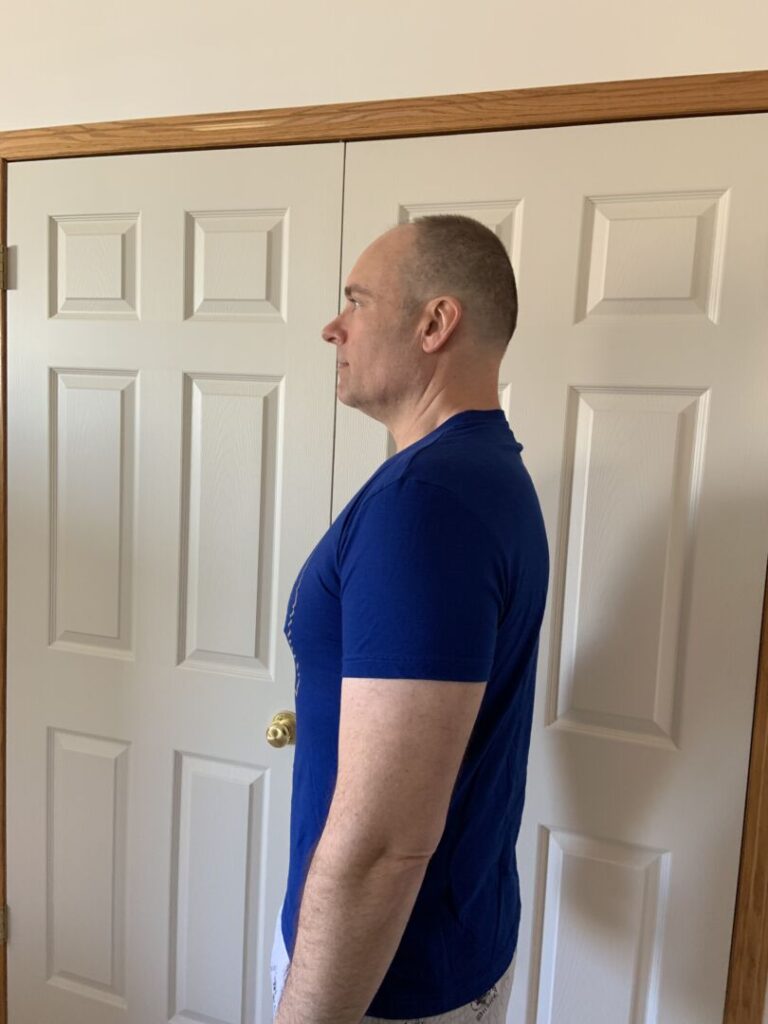
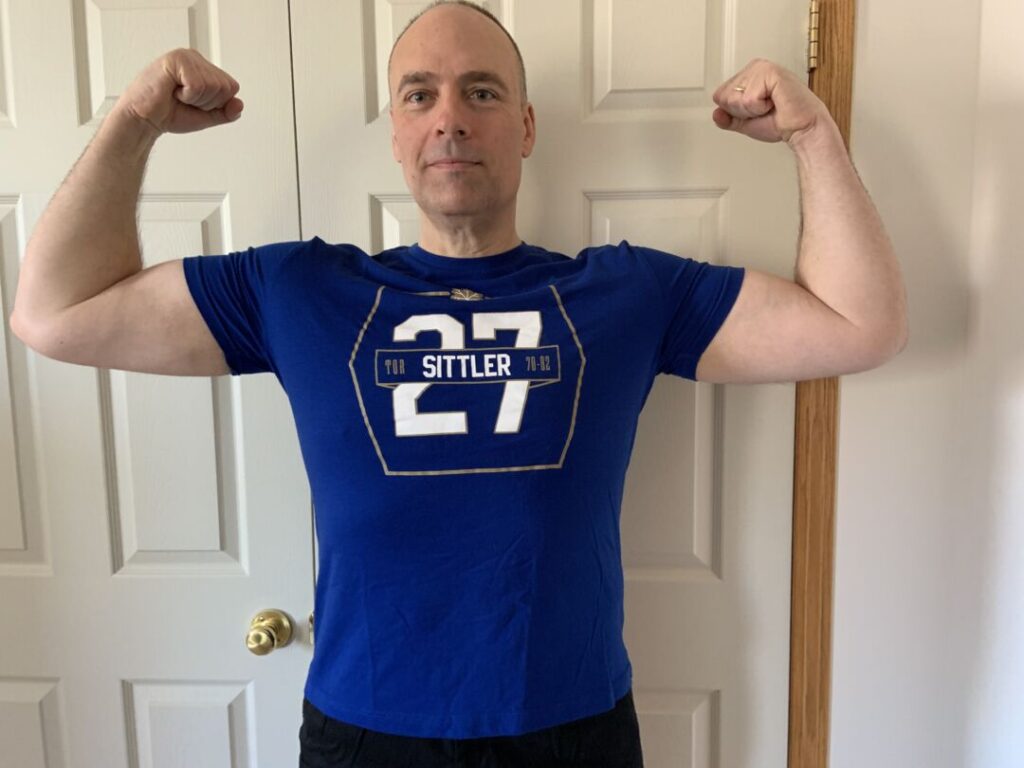


4 Comments
Rebekah Charles
Excellent post and congrats to Kevin! He must be so overjoyed. I’ve actually tried the intermittent fasting before but I didn’t see much results from it. I don’t know if it’s because I’m use to working out, not enough sleep, or what. I am contemplating trying it again however, will follow these suggestions you have given to see what results come from it.
Thanks for sharing.
Kevin Strong
Some people even do longer periods for their intermittent fasting. However, I think you only need to avoid eating after dinner and before going to sleep to lose weight slowly.
I hope some of our weight-loss suggestions work for you. It sounds like you already have an exercise program, which is important.
Nitin Chandani
Very Informative blog!!
Kevin Strong
Thanks. We try to provide useful information, but keep it interesting and brief too. We hope you gained some ideas to help you lose weight or maintain your current weight.